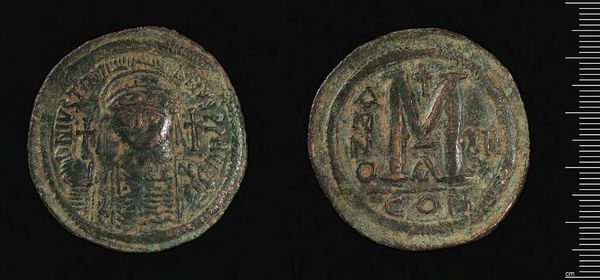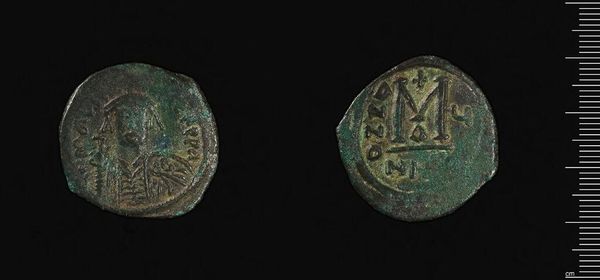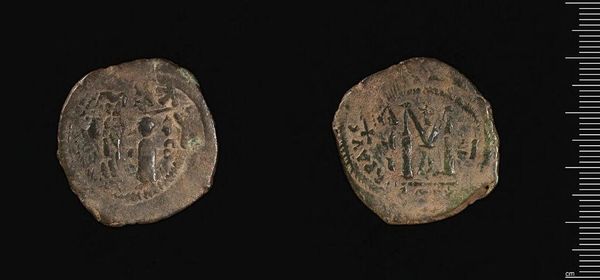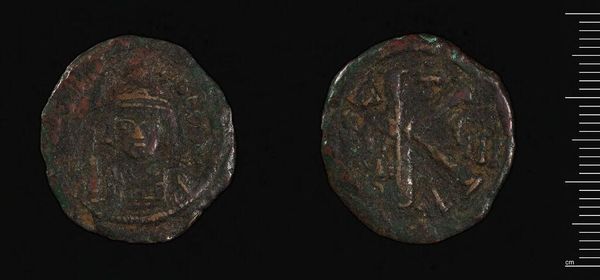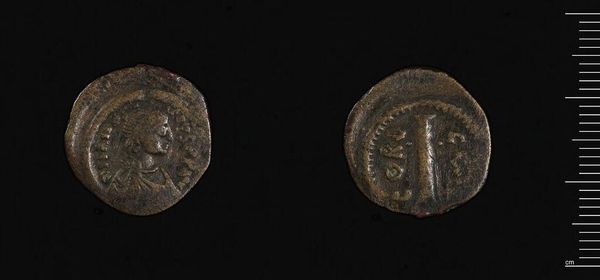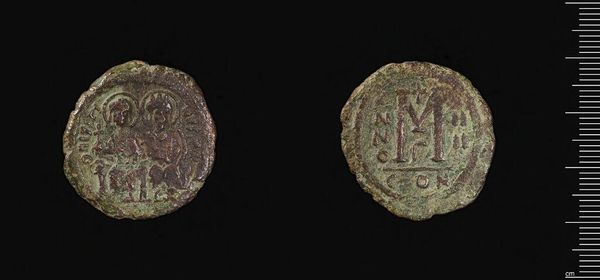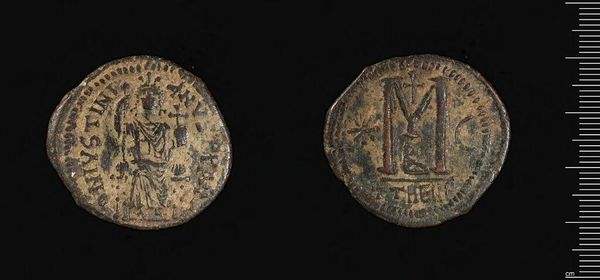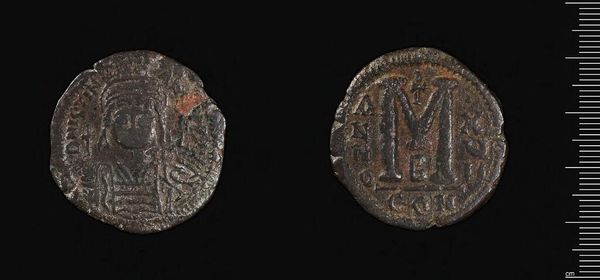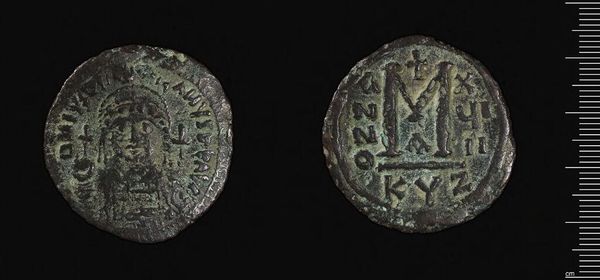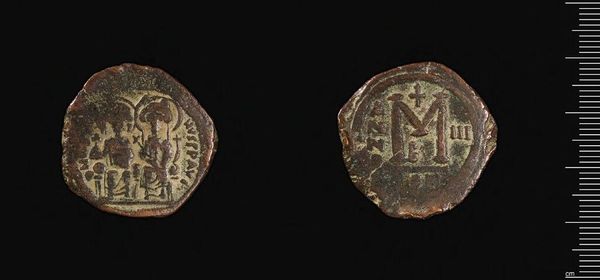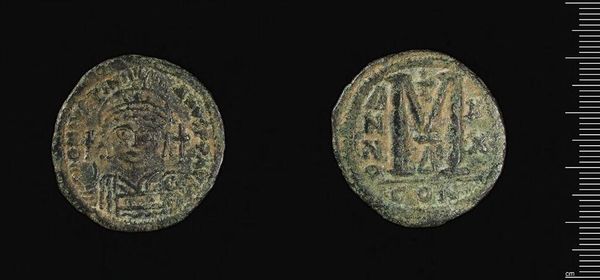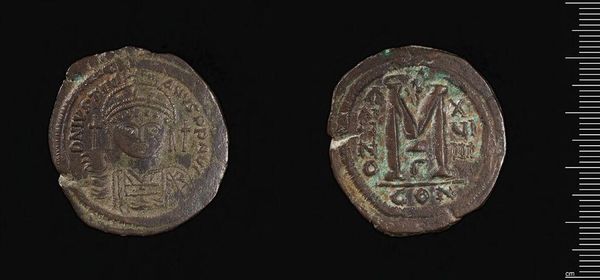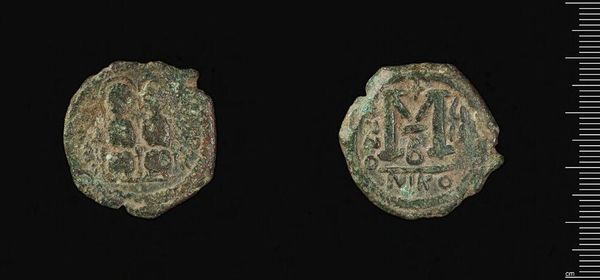
Dimensions: 20.91 g
Copyright: CC0 1.0
Curator: This object, a Follis of Justinian I from Carthage, is a fascinating window into the Byzantine Empire's economic and social fabric. Editor: It has such a weathered, almost ghostly quality. The patina speaks volumes, but the imagery appears quite obscured. Curator: Precisely. As currency, it was handled by countless individuals, from merchants to soldiers, reflecting daily transactions and imperial power. The deliberate design—Justinian's image and the 'M' denoting value—were tools of control. Editor: And that 'M' dominates the composition. Its stark simplicity contrasts with the more ornate, if eroded, portrait. It’s such an immediate symbol of wealth and power. Curator: The coin’s materiality is crucial; its bronze alloy determined its worth and durability. Its production involved mining, smelting, and minting—a network of labor fueling the empire. Editor: I can't help but feel that its current state speaks to the collapse of such control. Curator: Indeed, the wear and tear reflect both the empire’s endurance and its eventual decline. It’s a tangible link to a distant past. Editor: A compelling reminder of how the grandest empires ultimately return to dust.
Comments
No comments
Be the first to comment and join the conversation on the ultimate creative platform.
